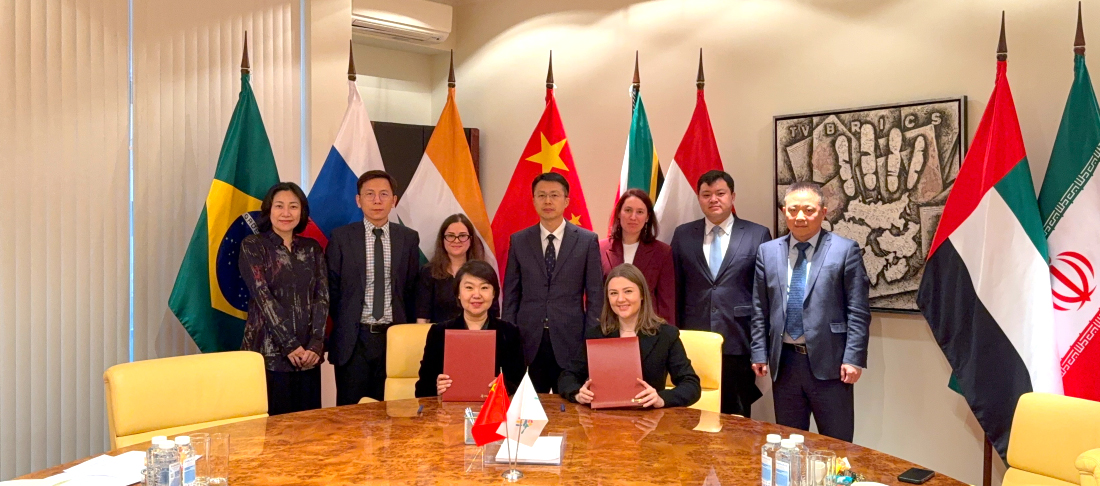China pushing to expand telecom services
2022-12-07 | China Daily Global
Approach finding success in remote regions cut off by high mountains
China is making what is arguably the world's biggest push to reduce the digital divide between rural and urban residents, according to experts.
The country's mobile carriers and telecom tower builders are pouring tons of resources into ensuring that more people have access to fast, affordable mobile communications and broadband network services, officials said.
The move is part of broader efforts of the Ministry of Industry and Information Technology and the Ministry of Finance to promote inclusive telecom services.
The central government, local governments and telecom carriers have earmarked billions of dollars since the end of 2015 to overcome geographical barriers to expand network construction. That allows more people to benefit from upgraded internet services.
One focus is to expand the telecom signal coverage in the Daxing'anling Mountains in the Inner Mongolia autonomous region, officials said. The famous mountain range, located in the most northern area of China, is known as "nature's treasure trove."
Last year, the MIIT approved a plan to build 121 4G telecom base stations in the mountain range, and most of the construction work has already been completed.
After the project is completed, public network coverage is expected to increase from less than 10 percent to about 50 percent in the forest farms, scenic spots, fire watch towers, important roads and key fire danger areas in the mountains. Forest farming combines trees with crops or livestock.
E Liye, a forestry worker in the mountainous area, is one of the local people who have benefited from expanded telecom services.
From April to November, E and his colleagues went deep into the mountains to do field surveys. Starting this year, data collected by forestry workers does not have to be ferried back to technicians for analysis by motorcycle. Instead, it is transmitted in real time through the 4G network.
According to the MIIT, more will be done to increase coverage and support for key rural counties, border areas and key forest and grassland fire prevention areas as well as villages, forest farms, pastures and along major transportation routes. At the same time, the construction of 5G networks in rural areas will also be increased year by year.
Similar efforts are also being made in Yunnan province, changing the lives of people in remote areas. One of them, Xiong Yulan, 34, said she has childhood memories of the thundering explosions that once served to summon villagers for rallies.
In the early 1990s, gunpowder was the most efficient way to send messages in Xiong's hometown, the Dulongjiang township in Gongshan county, since no phones were available in that area, which is near the Derung River.
In 2019, Xiong and other residents started to see changes in the availability of 5G services as China Mobile, the nation's largest mobile telecom operator, set up a 5G station in the distant township.
Xiong said she was thrilled when she tried virtual reality glasses connected to the 5G network. She could see Kunming, Yunnan's provincial capital, about 900 kilometers away, in real time.
"It's wonderful. I feel like I'm there," she said. "I want to reach out and touch the buildings and the cars passing next to me."
Xiong's township and adjacent areas are a major center for the community of ethnic Derung residents. The journey of the Derung from having no telephones to using a high-speed 5G network has come at an accelerated pace as local telecom operators and tower builders pour in resources to ensure that more people have access to fast, affordable mobile communication and broadband network services.
China Mobile, for instance, said it invested more than 160 billion yuan ($22.3 billion) through 2020 to improve network infrastructure in poor areas.
The success of such efforts is not just about money, but also is dependent on frontline employees in poor villages, officials said. Frontline workers must overcome geographical barriers to build telecom base stations and teach villagers how to use phones.
Dulongjiang, once listed as one of the nation's least developed regions, had changed very little until the founding of New China in 1949, officials said.
Poverty in the Derung River region is partly a result of the area's geographical complexities. It is not only mountainous, but also frequently struck by snowstorms in winter and landslides in summer.
Two decades ago, it took three days to walk from Dulongjiang to Gongshan county center. The township, which was unable to receive telephone calls until 2004, was the last ethnic minority area in China to access basic telephone services.
In 2014, thanks to telecom carriers including China Mobile and China Unicom, Derung people finally gained access to 4G services.
The process was by no means easy, officials said. The best time for construction in Dulongjiang lasts only two months a year. Also, because of geographical barriers, it was extremely difficult to transport materials to build base stations, making the transportation costs incredibly high, according to Ma Chunhai, an employee at China Mobile's Gongshan branch.
Ma and his colleagues often had to cross over Gongshan Mountain to find appropriate locations to build base stations, even in heavy wind and snow.
In June 2014, 4G services finally opened in Dulongjiang. It is now supported by more than 30 base stations, allowing residents to enter the information highway, even though there's no geographical highway connecting the village with the outside world.
Now, because of the efforts of telecom carriers such as China Mobile and China Telecom to expand the network infrastructure, Derung people have entered the 5G era.
"In the past, Derung people were secluded from the outside world, but today we keep pace with other regions and even more developed coastal cities in terms of 5G technology," said Gao Derong, former head of the government of Gongshan county, which administers Dulongjiang.
Only 6 percent of the world's population live in areas without mobile network coverage, according to the GSMA Mobile Economy Report 2022, produced by the London-based Global System for Mobile Communications. But a huge usage gap remains since many people who have coverage still don't use the internet. In 2021, the usage gap included 3.2 billion people, or 41 percent of the world's population.
To help solve the problem, Chinese telecom equipment maker Huawei Technologies Co Ltd is working closely with industry organizations and partners.
Huawei said its information communications products are expected to bring connectivity to 120 million people in remote areas in over 80 countries and regions by 2025, the company said last month.
The plan is part of Huawei's push to drive broader connectivity in the digital economy era, and to explore how to use better connectivity to create greater business and social value while promoting sustainability, the company said.
By the end of 2021, Huawei's RuralStar telecom systems had already helped connect 60 million people in remote areas in more than 70 countries and regions, the company said.
"Connectivity is not just the cornerstone of the digital economy, but a basic right for every human being," said Liang Hua, chairman of Huawei.
Connectivity is expected to become more than just a tool for convenient communications. Together with digital technologies like the cloud and artificial intelligence, connectivity will help bring everyone into the digital world and drive social progress, Liang said.
masi@chinadaily.com.cn






